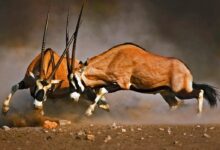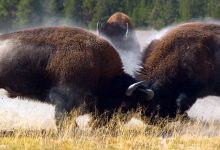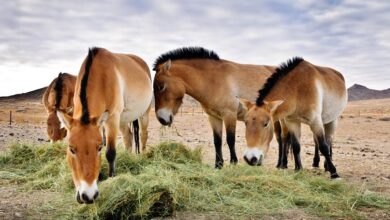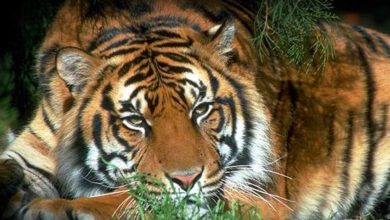The Majestic Animals of Africa: A Journey Through its Diverse Fauna
Deep within the heart of Africa lies a world of wonder and diversity, where the roar of lions echoes across savannas, the graceful gait of giraffes towers above acacia trees, and herds of elephants roam the vast open spaces. This is the realm of Africa’s fauna, a diverse collection of species that have adapted to thrive in the continent’s diverse habitats, from the scorching deserts to the misty mountaintops.
The fauna of Africa is a diverse and fascinating collection of species that are found nowhere else on the planet. From towering giraffes to powerful lions, Africa is home to an incredible array of wildlife that has evolved over millions of years to survive in the challenging conditions of the continent.
One of the most distinctive features of African fauna is the large number of large mammals that are found here, such as elephants (Loxodonta africana), which can weigh up to 10 tonnes (10,000 kg) and reach a height of up to 3.96 meters (13 ft) at the shoulder, and white rhinoceros (Ceratotherium simum), which can weigh up to 3,600 kg (7,940 lb) and measure up to 3.6 meters (12 ft) in length.
African savannas are also home to a wide variety of hoofed mammals, including antelopes (Antilopinae), zebras (Equus burchellii), and African buffalos (Syncerus caffer), as well as predators such as cheetahs (Acinonyx jubatus), leopards (Panthera pardus), and hyenas (Hyaenidae).
In addition to large mammals, Africa is also home to a rich diversity of bird life, including vultures (Accipitridae), storks (Ciconiidae), and flamingos (Phoenicopteridae), as well as a wide range of reptiles, including crocodiles (Crocodylidae), tortoises (Testudines), and snakes (Serpentes).
Whether you’re an avid wildlife enthusiast or simply looking to experience the beauty and majesty of nature, Africa’s fauna is sure to captivate and inspire you. So why not pack your bags and head off on an adventure to discover this incredible world for yourself!
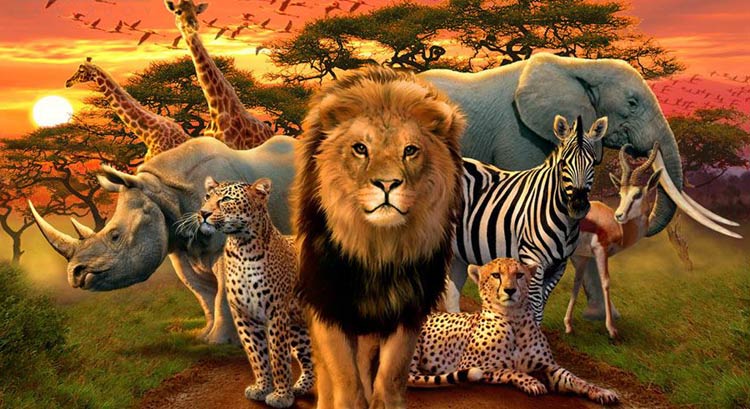
Evolution of African fauna
The evolution of African fauna has been shaped by a combination of geological, climatic, and biological factors over millions of years. During the late Cenozoic Era, the African continent was home to a wide variety of mammals, including early primates, large carnivores, and hoofed mammals, which evolved to adapt to the changing habitats and environments of the region.
One of the key factors that influenced the evolution of African fauna was the formation of the Great Rift Valley, a geological feature that created a number of isolated habitats and allowed for the evolution of unique species. For example, the savannas and grasslands of eastern Africa provided a habitat for the evolution of large grazing mammals such as giraffes and zebras, while the forests and woodlands of central and western Africa gave rise to a diverse array of primates, including gorillas and chimpanzees.
The changing climate also had a major impact on the evolution of African fauna. During the Pliocene and Pleistocene epochs, the African continent experienced a series of climatic fluctuations, including periods of drought and wetter conditions, which led to the evolution of species that were better adapted to these changing environments.
In addition to these natural factors, the evolution of African fauna has also been influenced by human activities, including the hunting of large mammals for food and trade, and the destruction of habitats for agriculture and urban development. However, despite these challenges, Africa remains one of the most biodiverse regions on the planet, and continues to support an incredible array of unique and fascinating species.
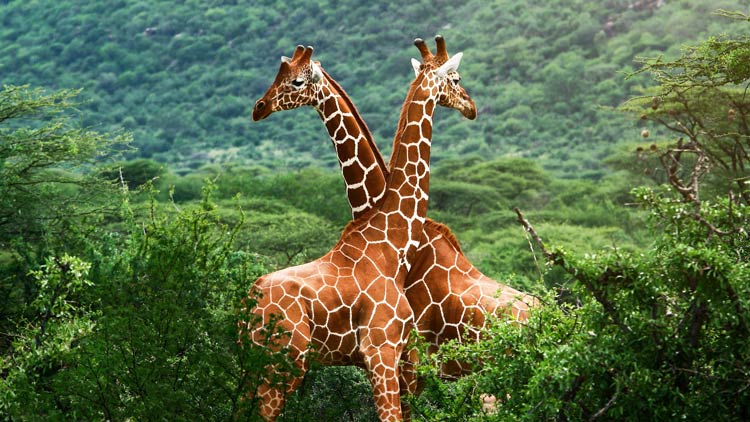
Fauna of Africa in the Tertiary
During the Tertiary period, which lasted from approximately 65 to 2.6 million years ago, the fauna of Africa was characterized by a diverse array of mammals, birds, reptiles, and other species. This period was characterized by a number of significant changes in the Earth’s climate, including the cooling and drying of the continents, the development of grasslands, and the formation of new mountain ranges, which all influenced the evolution of life on the African continent.
One of the most notable features of the Tertiary fauna of Africa was the presence of large mammals, such as elephants, rhinoceroses, and hippopotamuses, as well as early primates, including the ancestors of modern-day monkeys and apes. There were also a variety of large carnivores, such as the extinct “false saber-toothed cats” (Machairodontinae), which were related to modern-day cats, but had much longer canine teeth.
In addition to mammals, the Tertiary fauna of Africa also included a diverse array of reptiles, including turtles, lizards, and snakes, as well as birds, such as vultures, storks, and flamingos. The Tertiary period also saw the evolution of the first hominids, early human ancestors, who would go on to evolve into modern humans in the Quaternary period.
Overall, the Tertiary period was a time of great change and evolution for the fauna of Africa, and many of the species that evolved during this time would go on to play important roles in shaping the diverse and fascinating wildlife communities that are found on the African continent today.
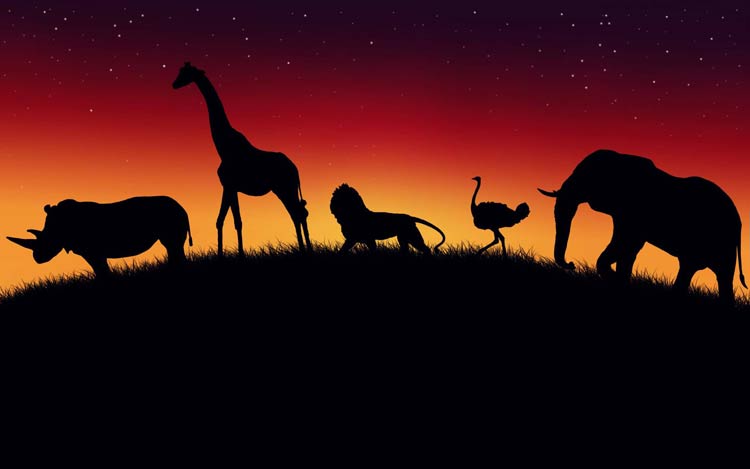
Africa’s big five animals
Africa’s “Big Five” animals are a group of five species that are considered to be the most challenging and sought-after animals to hunt on foot. These species, which include:
- African ion (Panthera leo)
- African elephant (Loxodonta africana)
- Cape buffalo (Syncerus caffer)
- Leopard (Panthera pardus)
- Rhinoceros (Ceratotherium simum and Diceros bicornis)
have become synonymous with African wildlife and are an iconic part of the continent’s natural heritage.

African Lion
The lion is the largest of the African big cats and is known for its distinctive mane, powerful roar, and impressive hunting skills. These majestic animals are apex predators and play a crucial role in maintaining the balance of ecosystems across the African savannas.
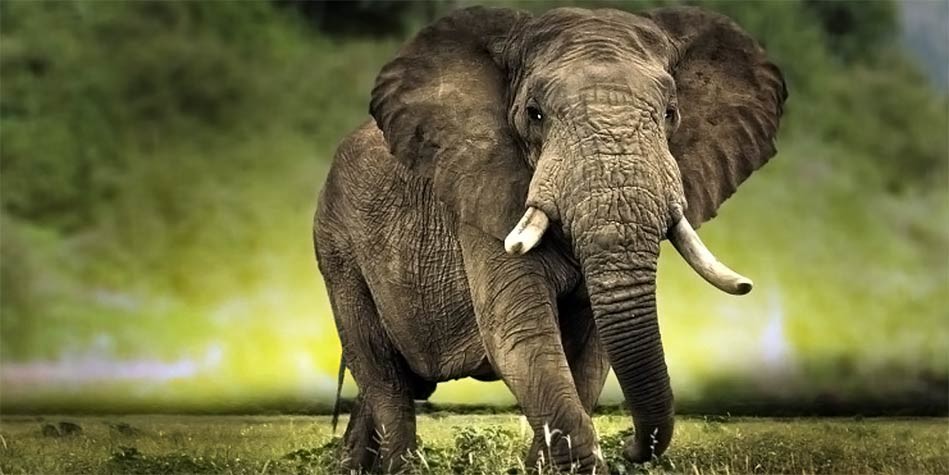
African elephant
The African elephant is the largest land mammal in the world and is known for its intelligence, social behavior, and remarkable memory. These gentle giants are essential to the health of African ecosystems and play a critical role in shaping the habitats they occupy.
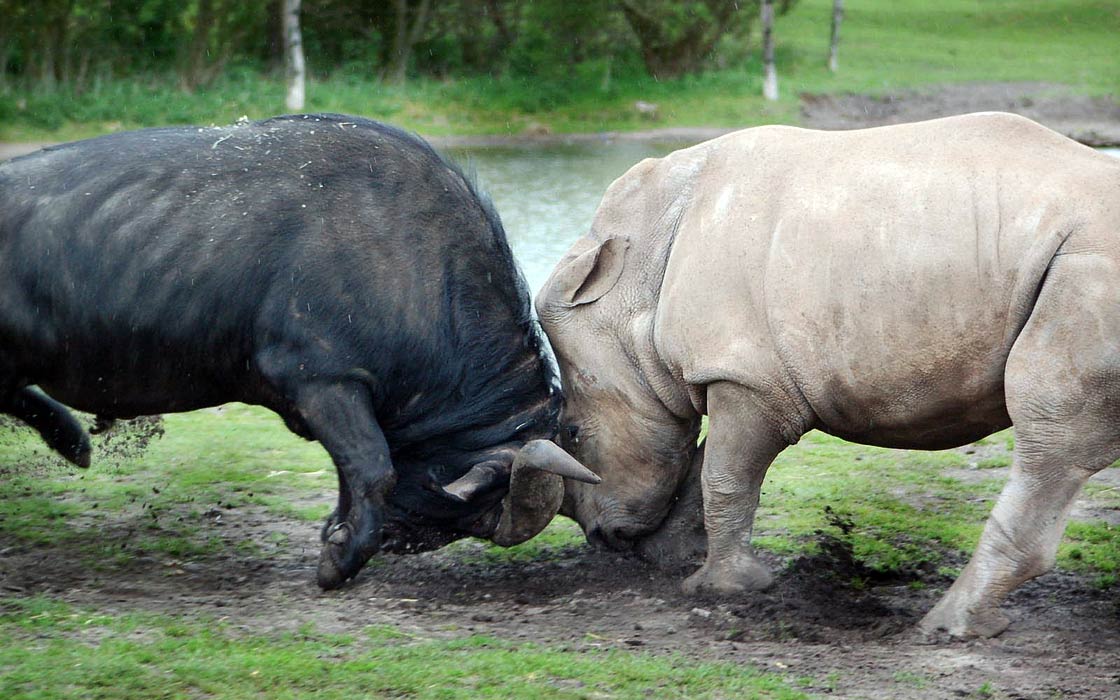
Cape buffalo
The Cape buffalo is a formidable herbivore that is known for its strength, agility, and unpredictable nature. These animals are highly social and form tight-knit herds that roam the African savannas and are capable of defending themselves against predators.
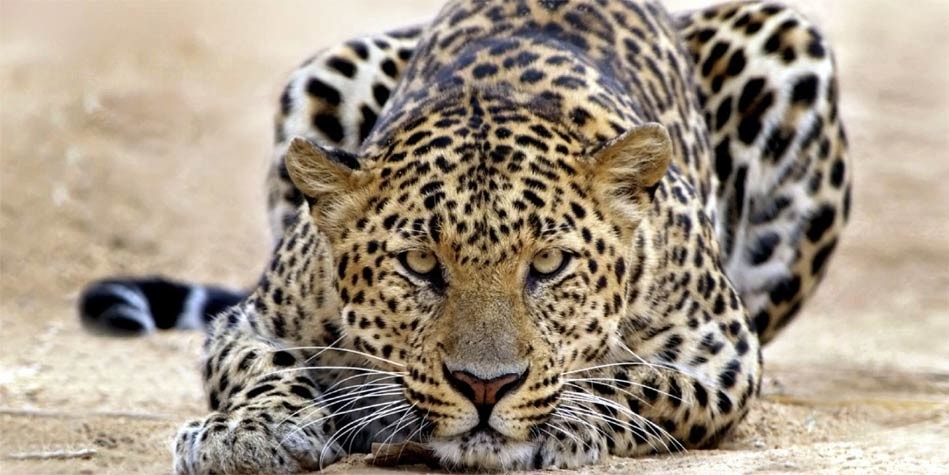
Leopard
The leopard is a solitary and elusive predator that is known for its stunning camouflage and stealthy hunting techniques. These cats are highly adaptable and can be found in a variety of habitats, from forests to deserts, and are capable of taking down a wide range of prey.
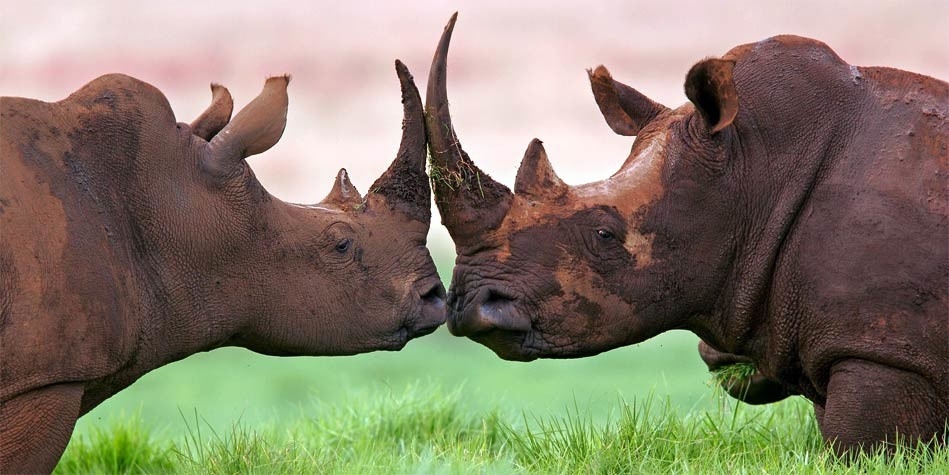
Rhinoceros
Finally, the rhinoceros is one of the most recognizable and threatened species on the African continent. These massive herbivores are known for their distinctive horns and armor-like skin and play a crucial role in shaping the habitats they occupy.
Together, these five species represent some of the most fascinating and charismatic animals found on the African continent and are an essential part of its natural heritage. Whether you’re an avid wildlife enthusiast or simply looking to experience the beauty and majesty of nature, Africa’s Big Five are sure to captivate and inspire you.

Invertebrate Group
The modern fauna of Africa includes a diverse array of invertebrates, or animals without backbones. These species play important roles in the food chain and contribute to the health and balance of ecosystems across the continent.
One of the most notable groups of invertebrates found in Africa is insects, which are incredibly diverse and play a crucial role in pollination, decomposition, and as a food source for other animals. Some of the most common and recognizable insects found in Africa include ants, beetles, butterflies, and moths.
Arachnids, such as spiders and scorpions, are also an important component of the African invertebrate fauna. These species play important roles in controlling insect populations and are also important food sources for other animals, such as birds and reptiles.
Other groups of invertebrates found in Africa include mollusks, such as snails and slugs, as well as crustaceans, such as crayfish and crabs. These species are important components of aquatic ecosystems and play important roles in breaking down dead plant and animal matter and recycling nutrients in the food chain.
In addition to these groups, Africa is also home to a number of unique and fascinating invertebrates, including giant snails, glow-in-the-dark millipedes, and an array of colorful and bizarrely shaped insects. These species, along with the other invertebrates found on the continent, are an essential part of the African ecosystem and contribute to its rich and diverse biota.
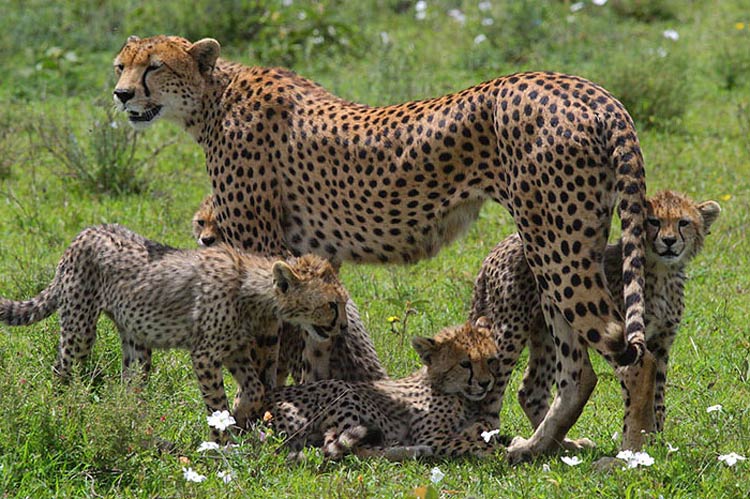
Some of the most representative examples of Africa’s invertebrates, along with a brief description:
- African Elephant Hawk Moth (Deilephila elpenor)
This large and striking moth is known for its distinctive elephant-like appearance and is found across much of sub-Saharan Africa. The caterpillar feeds on the leaves of various species of plants, including the commonly cultivated hibiscus. - Giant African Snail (Achatina fulica)
This large snail is native to East Africa and has become a major invasive species in many other parts of the world. Despite its reputation as a destructive pest, it is an important food source for many animals and is also used in traditional medicine in some cultures. - Green Bottle Fly (Lucilia caesar)
This common fly is found throughout much of the world and is well known for its distinctive metallic green coloration. The larvae feed on a wide range of decaying organic matter and the adult flies play an important role in pollination and as a food source for other animals. - African Golden Wolf Spider (Lycosa rabida)
This large and striking spider is found across much of sub-Saharan Africa and is known for its distinctive golden-yellow coloration and fast, agile hunting style. The spider feeds on a variety of insects and small invertebrates. - Giant Millipede (Archispirostreptus gigas)
This massive millipede is native to central and western Africa and is known for its impressive size and slow, lumbering gait. The millipede feeds on decaying plant matter and is an important decomposer in African ecosystems. - African Honey Bee (Apis mellifera scutellata)
This subspecies of the honey bee is native to Africa and is known for its distinctive yellow and black striped appearance and its ability to produce large quantities of honey. The bees play an important role in pollination and are also an important food source for many animals, including humans.
These are just a few examples of the many fascinating invertebrates found in Africa. Each species plays an important role in its ecosystem and contributes to the incredible biodiversity of the continent.
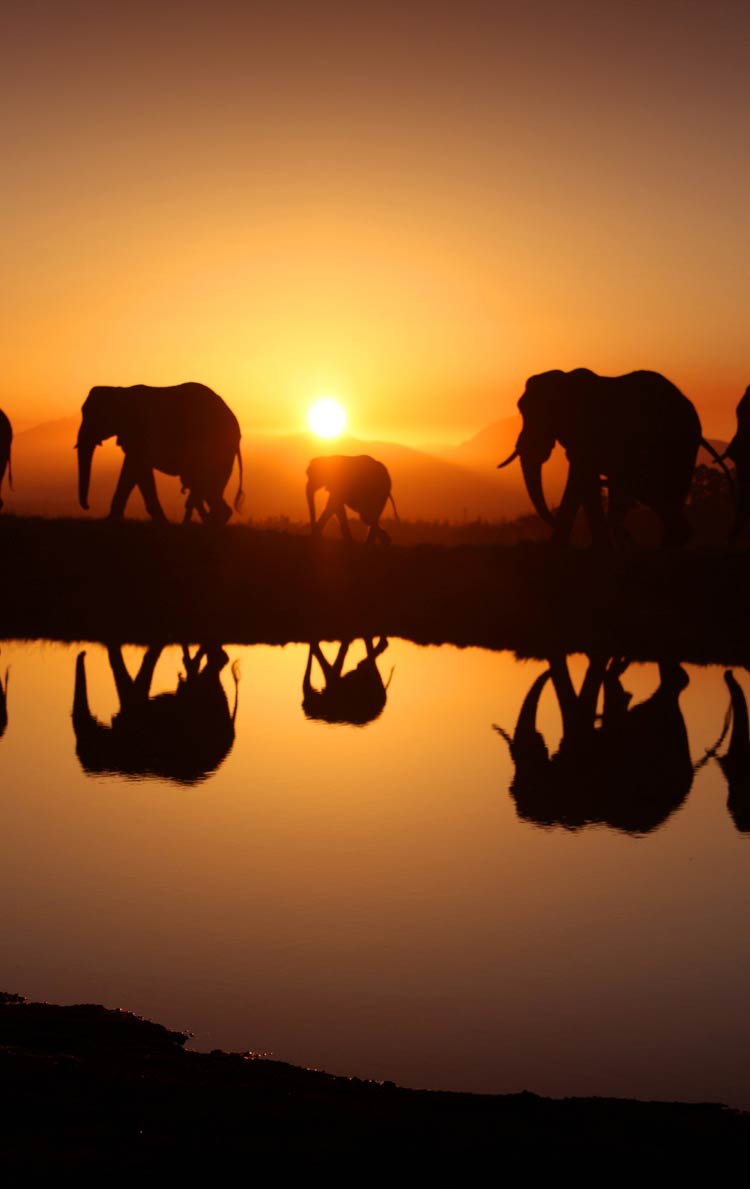
Insects
The modern fauna of Africa includes a diverse array of insects, which play important roles in the food chain and contribute to the health and balance of ecosystems across the continent. Here are some of the most representative examples of African insects, along with a brief description:
- African Elephant Hawk Moth (Deilephila elpenor)
This large and striking moth is known for its distinctive elephant-like appearance and is found across much of sub-Saharan Africa. The caterpillar feeds on the leaves of various species of plants, including the commonly cultivated hibiscus. - Green Bottle Fly (Lucilia caesar)
This common fly is found throughout much of the world and is well known for its distinctive metallic green coloration. The larvae feed on a wide range of decaying organic matter and the adult flies play an important role in pollination and as a food source for other animals. - African Honey Bee (Apis mellifera scutellata)
This subspecies of honey bee is native to Africa and is known for its distinctive yellow and black striped appearance and its ability to produce large quantities of honey. The bees play an important role in pollination and are also an important food source for many animals, including humans. - Stag Beetle (Lucanidae)
This family of beetles is well known for their large and distinctive mandibles, which are used by the males in combat for territory and mates. Stag beetles are found across much of Africa and feed on tree sap and rotting wood. - African Butterflies (Nymphalidae)
This family of butterflies is well known for its bright colors and intricate patterns and is found across much of Africa. The caterpillars feed on a wide range of plants, while the adult butterflies play an important role in pollination and as a food source for other animals. - Dung Beetle (Scarabaeidae) – This family of beetles is well known for its role in breaking down and recycling dung in ecosystems across Africa. The beetles play an important role in maintaining soil fertility and are also an important food source for many animals, including birds and small mammals.
These are just a few examples of the many fascinating insects found in Africa. Each species plays an important role in its ecosystem and contributes to the incredible biodiversity of the continent.
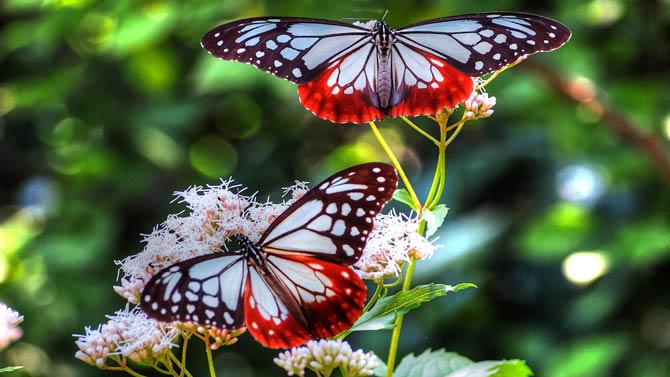
Butterflies
The modern fauna of Africa includes a diverse array of butterflies, which are known for their bright colors, intricate patterns, and important role in pollination. Here are some of the most representative examples of African butterflies, along with a brief description:
- African Monarch Butterfly (Danaus chrysippus)
This well-known butterfly is found throughout much of Africa and is known for its distinctive orange and black markings and its long migration. The caterpillar feeds on milkweed, while the adult butterfly feeds on nectar from a variety of flowers. - African Queen Butterfly (Danaus gintheri)
This striking butterfly is found in a range of habitats across sub-Saharan Africa and is known for its distinctive black and white markings. The caterpillar feeds on milkweed, while the adult butterfly feeds on nectar from a variety of flowers. - African Leaf Butterfly (Kallima inachus)
This fascinating butterfly is found in a range of habitats across Africa and is known for its incredible camouflage abilities. When the wings are closed, the butterfly resembles a dead leaf, helping it to avoid predators. The caterpillar feeds on a variety of plants, while the adult butterfly feeds on nectar from flowers. - African Bush Brown (Bicyclus safitza)
This common butterfly is found in a range of habitats across sub-Saharan Africa and is known for its distinctive brown and orange markings. The caterpillar feeds on a variety of plants, while the adult butterfly feeds on nectar from flowers. - African Painted Lady (Vanessa cardui)
This well-known butterfly is found throughout much of Africa and is known for its distinctive orange and black markings. The caterpillar feeds on a variety of plants, including thistles and mallows, while the adult butterfly feeds on nectar from a variety of flowers.
These are just a few examples of the many fascinating butterflies found in Africa. Each species plays an important role in its ecosystem, through pollination and as a food source for other animals, and contributes to the incredible biodiversity of the continent.
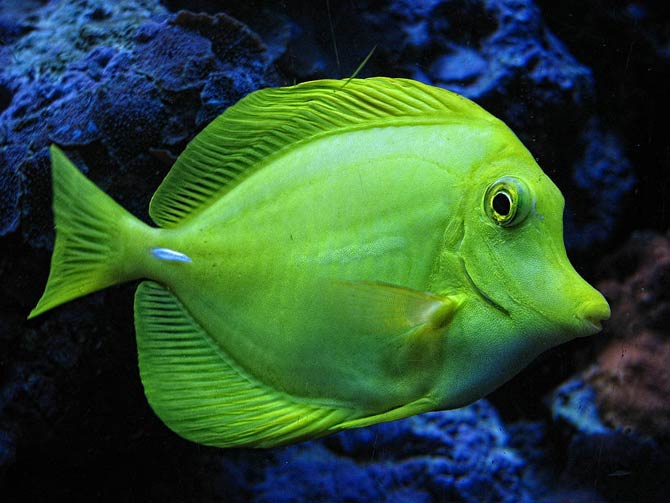
Fish
The modern fauna of Africa includes a diverse array of fish, which play important roles in aquatic ecosystems and are an important source of food for many animals, including humans. Here are some of the most representative examples of African fish, along with a brief description:
- Nile Perch (Lates niloticus)
This large predatory fish is found in the Nile River and its tributaries, as well as in several large lakes in Africa, including Lake Victoria. Nile perch can grow to over 2 m (6.6 ft) in length and weigh over 200 kg (441 lb). - Tilapia (Tilapia spp.)
This diverse genus of fish is found in a range of habitats across Africa, including rivers, lakes, and wetlands. Tilapia are a hardy and adaptable species that are an important source of food for both humans and wildlife. - African Catfish (Clarias spp.)
This diverse genus of catfish is found in a range of habitats across Africa, including rivers, lakes, and wetlands. African catfish are known for their hardiness and are an important source of food for both humans and wildlife. - African lungfish (Protopterus spp.)
This unique group of fish is found in the rivers and lakes of central and eastern Africa and is known for its ability to survive for extended periods of time out of water, by breathing air through specialized lung-like structures. - Sardine (Sardinops spp.)
This group of small, oily fish is found along the coast of Africa, from the Atlantic to the Indian Ocean. Sardines are an important source of food for both humans and wildlife, including birds, seals, and whales.
These are just a few examples of the many fascinating fish found in Africa. Each species plays an important role in its ecosystem and contributes to the incredible biodiversity of the continent.

Amphibians
The modern fauna of Africa includes a diverse array of amphibians, which play important roles in many ecosystems and are an important indicator of the overall health of those ecosystems. Here are some of the most representative examples of African amphibians, along with a brief description:
- African Bullfrog (Pyxicephalus adspersus)
This large and distinctive amphibian is found throughout much of sub-Saharan Africa and is known for its deep, bellowing calls. The African bullfrog is a predatory species that feeds on a variety of prey, including insects, reptiles, and small mammals. - African Clawed Frog (Xenopus laevis)
This well-known amphibian is found throughout much of sub-Saharan Africa and is known for its distinctive webbed feet and its use in medical research. The African clawed frog is a semi-aquatic species that feeds on a variety of prey, including insects, crustaceans, and small fish. - African Reed Frog (Hyperolius spp.)
This diverse genus of frogs is found throughout much of sub-Saharan Africa and is known for its striking coloration and its distinctive calls. The African reed frog is a semi-aquatic species that feeds on a variety of prey, including insects and other small invertebrates. - West African Giant Toad (Sclerophrys perreti)
This large and distinctive amphibian is found in West Africa and is known for its size and its powerful toxin. The West African giant toad is a terrestrial species that feeds on a variety of prey, including insects and small mammals. - Goliath Frog (Conraua goliath)
This large and distinctive amphibian is found in the Cameroon Basin of West Africa and is known for its size and its low, deep calls. The Goliath frog is a semi-aquatic species that feeds on a variety of prey, including insects, crustaceans, and small fish.
These are just a few examples of the many fascinating amphibians found in Africa. Each species plays an important role in its ecosystem and contributes to the incredible biodiversity of the continent.
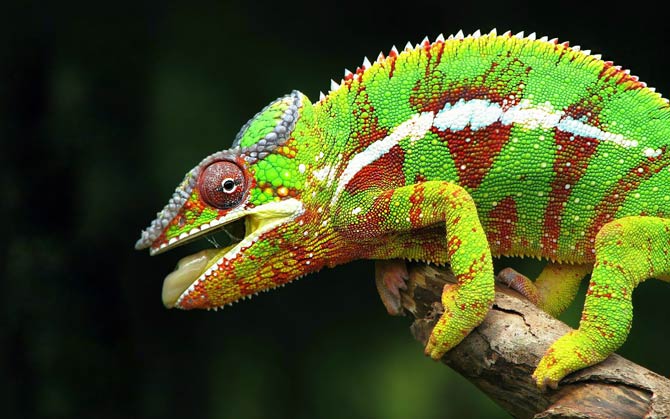
Reptiles
The modern fauna of Africa includes a diverse array of reptiles, which play important roles in many ecosystems and are an important indicator of the overall health of those ecosystems. Here are some of the most representative examples of African reptiles, along with a brief description:
- Nile Crocodile (Crocodylus niloticus)
This large and powerful predator is found throughout much of sub-Saharan Africa and is known for its size and its strength. The Nile crocodile is a semi-aquatic species that feeds on a variety of prey, including fish, mammals, and birds. - African Rock Python (Python sebae)
This large and powerful snake is found throughout much of sub-Saharan Africa and is known for its size and its strength. The African rock python is a terrestrial species that feeds on a variety of prey, including mammals, birds, and reptiles. - Black Mamba (Dendroaspis polylepis)
This venomous snake is found throughout much of sub-Saharan Africa and is known for its speed and its deadly venom. The black mamba is a terrestrial species that feeds on a variety of prey, including rodents, birds, and reptiles. - Chameleon (Chamaeleonidae spp.)
This diverse group of lizards is found throughout much of sub-Saharan Africa and is known for its distinctive, independently-moving eyes and its ability to change color. Chameleons feed on a variety of prey, including insects, spiders, and small invertebrates. - Leopard Tortoise (Stigmochelys pardalis)
This large and distinctive tortoise is found throughout much of sub-Saharan Africa and is known for its distinctive spotted shell. The leopard tortoise is a terrestrial species that feeds on a variety of vegetation, including grasses, leaves, and fruits. YYY African Rock Python (Python sebae) – This large and powerful snake is found throughout much of sub-Saharan Africa and is known for its size, its strength, and its ability to swallow prey whole. African rock pythons are carnivores that feed on a variety of prey, including birds, mammals, and reptiles. - African Spurred Tortoise (Geochelone sulcata)
This large and distinctive tortoise is found in the Sahel region of Africa and is known for its size, its lifespan, and its ability to dig deep burrows for shelter. African spurred tortoises are herbivores that feed on a variety of plants, including grasses and succulents. - African Monitor Lizard (Varanus spp.)
These large and powerful lizards are found throughout much of Africa and are known for their size, their strength, and their ability to swim and climb. African monitor lizards are carnivores that feed on a variety of prey, including fish, birds, mammals, and reptiles.
These are just a few examples of the many fascinating reptiles found in Africa. Each species plays an important role in its ecosystem and contributes to the incredible biodiversity of the continent.

Birds
Africa is home to a rich and diverse array of bird species, many of which are found nowhere else in the world. Here are some of the most representative examples of African birds, along with a brief description:
- Secretarybird (Sagittarius serpentarius)
This large and distinctive bird of prey is found throughout much of sub-Saharan Africa and is known for its long legs and its crest of feathers. The secretarybird is a terrestrial species that feeds on a variety of prey, including reptiles, mammals, and insects. - African Grey Parrot (Psittacus erithacus)
This intelligent and social bird is found throughout much of West and Central Africa and is known for its distinctive grey plumage and its ability to mimic human speech. The African grey parrot feeds on a variety of foods, including seeds, fruits, and insects. - Kori Bustard (Ardeotis kori)
This large and impressive bird is found throughout much of sub-Saharan Africa and is known for its size and its distinctive call. The kori bustard is a terrestrial species that feeds on a variety of foods, including seeds, insects, and small mammals. - Flamingo (Phoenicopteridae spp.)
This group of long-legged, wading birds is found throughout much of Africa and is known for its distinctive pink plumage and its feeding habits. Flamingos feed on a variety of small aquatic organisms, including algae, crustaceans, and mollusks. - Ostrich (Struthio camelus)
This large and distinctive bird is found throughout much of sub-Saharan Africa and is known for its size, its flightlessness, and its distinctive eggs. Ostriches are terrestrial birds that feed on a variety of foods, including seeds, leaves, and fruits. - African Stonechat (Saxicola torquatus)
This small and distinctive bird is found throughout much of Africa and is known for its bright plumage, its song, and its preference for rocky habitats. African stonechats are omnivores that feed on a variety of insects, seeds, and fruits. - Crowned Crane (Balearica regulorum)
This large and distinctive bird is found throughout much of Africa and is known for its elegant appearance, its courtship displays, and its distinctive call. Crowned cranes are omnivores that feed on a variety of plant and animal materials, including seeds, insects, and small mammals. - Grey Hornbill (Tockus nasutus)
This large and distinctive bird is found throughout much of Africa and is known for its size, its long beak, and its social behavior. Grey hornbills are omnivores that feed on a variety of fruits, insects, and small vertebrates.
These are just a few examples of the many fascinating birds found in Africa. Each species plays an important role in its ecosystem and contributes to the incredible biodiversity of the continent.
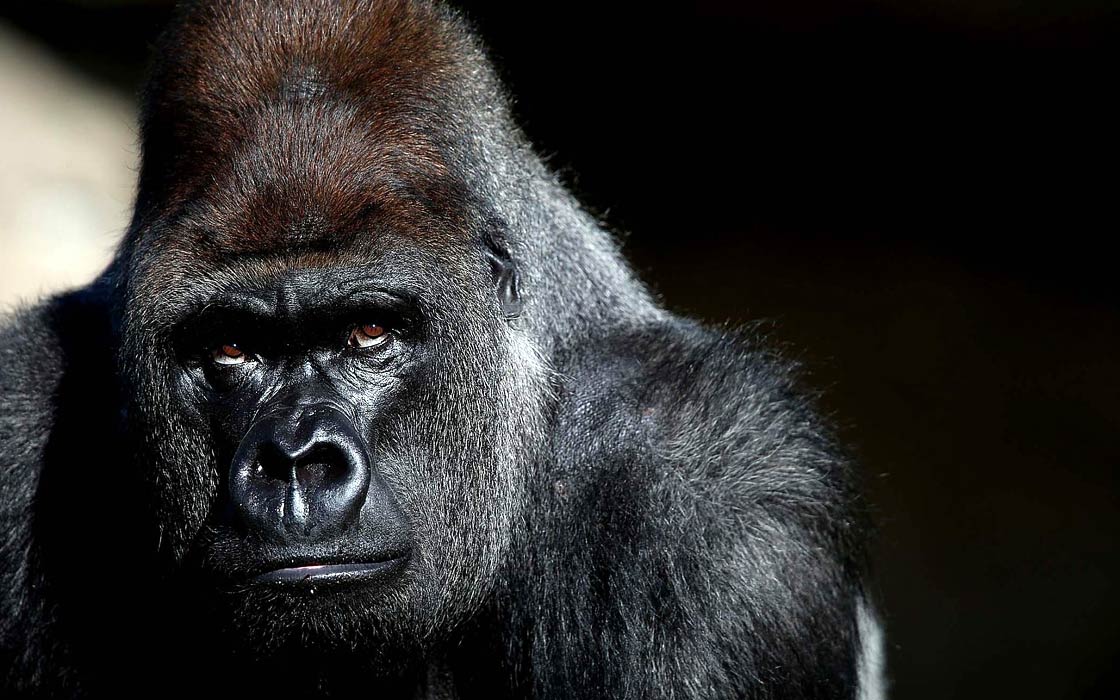
Mammals
Africa is home to an incredibly rich and diverse array of mammals, many of which are found nowhere else in the world. Here are some of the most representative examples of African mammals, along with a brief description:
- African Bush Elephant (Loxodonta africana)
This large and distinctive mammal is found throughout much of sub-Saharan Africa and is known for its size, its ivory tusks, and its social behavior. African elephants are herbivores that feed on a variety of plant materials, including leaves, stems, and bark. - Lion (Panthera leo) – This large and powerful predator is found throughout much of sub-Saharan Africa and is known for its distinctive mane, its social behavior, and its hunting skills. Lions are carnivores that feed on a variety of prey, including ungulates, smaller mammals, and birds.
- African Buffalo (Syncerus caffer)
This large and robust mammal is found throughout much of sub-Saharan Africa and is known for its size, its social behavior, and its potential danger to humans. African buffalos are herbivores that feed on a variety of plant materials, including grasses, leaves, and bark. - Giraffe (Giraffa camelopardalis) – This large and distinctive mammal is found throughout much of sub-Saharan Africa and is known for its long neck, its spotted coat, and its ability to browse at great heights. Giraffes are herbivores that feed on a variety of leaves, flowers, and fruits.
- Rhinoceros (Ceratotherium simum and Diceros bicornis)
This group of large and robust mammals is found throughout much of sub-Saharan Africa and is known for its distinctive horns, its social behavior, and its potential danger to humans. Rhinoceroses are herbivores that feed on a variety of plant materials, including grasses, leaves, and bark. - Chimpanzee (Pan troglodytes)
This intelligent and social primate is found throughout much of central and western Africa and is known for its close genetic relationship to humans. Chimpanzees are omnivores that feed on a variety of plant and animal materials, including fruits, leaves, insects, and small mammals. - Hippopotamus (Hippopotamus amphibius)
This large and distinctive mammal is found throughout much of sub-Saharan Africa and is known for its semi-aquatic lifestyle and its potential danger to humans. Hippopotamuses are herbivores that feed on grasses and other aquatic plants. - Gorilla (Gorilla gorilla)
This large and powerful primate is found throughout much of central and western Africa and is known for its social behavior, its size, and its rarity. Gorillas are herbivores that feed on a variety of plant materials, including leaves, stems, and fruits. - Cheetah (Acinonyx jubatus)
This fast and agile predator is found throughout much of sub-Saharan Africa and is known for its speed, its hunting skills, and its slender build. Cheetahs are carnivores that feed on a variety of prey, including gazelles, hares, and birds. - Spotted Hyena (Crocuta crocuta)
This large and powerful predator is found throughout much of sub-Saharan Africa and is known for its distinctive appearance, its social behavior, and its scavenging skills. Spotted hyenas are carnivores that feed on a variety of prey, including ungulates, smaller mammals, and carrion. - Warthog (Phacochoerus africanus)
This distinctive and hardy mammal is found throughout much of sub-Saharan Africa and is known for its distinctive appearance, its digging skills, and its tough nature. Warthogs are omnivores that feed on a variety of plant and animal materials, including roots, tubers, insects, and small mammals. - Zebra (Equus quagga and Equus burchelli)
This distinctive and social mammal is found throughout much of sub-Saharan Africa and is known for its striped coat, its social behavior, and its grazing habits. Zebras are herbivores that feed on a variety of grasses and other plant materials.
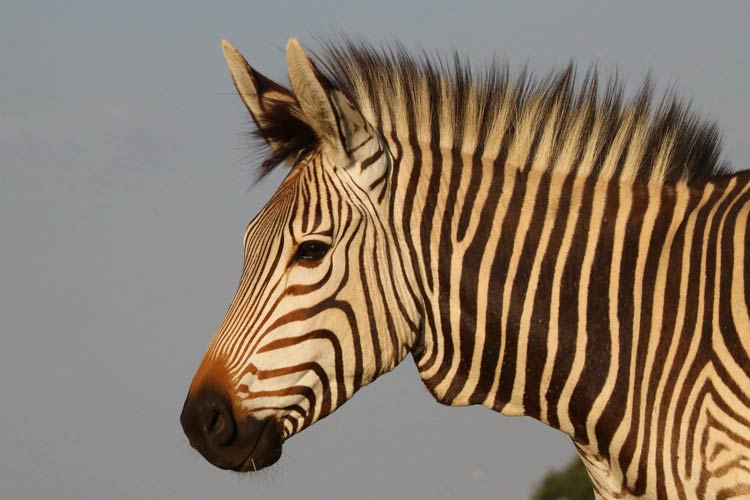
The role of conservation in Africa
Conservation efforts play a crucial role in preserving the incredible diversity of fauna in Africa. With many species facing threats from habitat loss, poaching, and other forms of human activity, it is essential that action is taken to protect these animals and ensure that they continue to thrive.
There are several initiatives underway in Africa to help conserve its wildlife, including the creation of national parks and protected areas, anti-poaching campaigns, and reforestation efforts. In addition, there are many non-governmental organizations (NGOs) working to support conservation efforts in the region, as well as international organizations like the Convention on International Trade in Endangered Species of Wild Fauna and Flora (CITES), which helps to regulate the trade of threatened species.
One of the key challenges in conservation is balancing the needs of people and wildlife. Many communities in Africa depend on the land and animals for their livelihoods, so it is important that conservation efforts take these needs into account and work to find solutions that benefit both people and wildlife.
Overall, the role of conservation in Africa is crucial in ensuring that the continent’s unique and diverse fauna continues to thrive for generations to come. By working together and taking action, we can protect and preserve these incredible species and the ecosystems they inhabit.
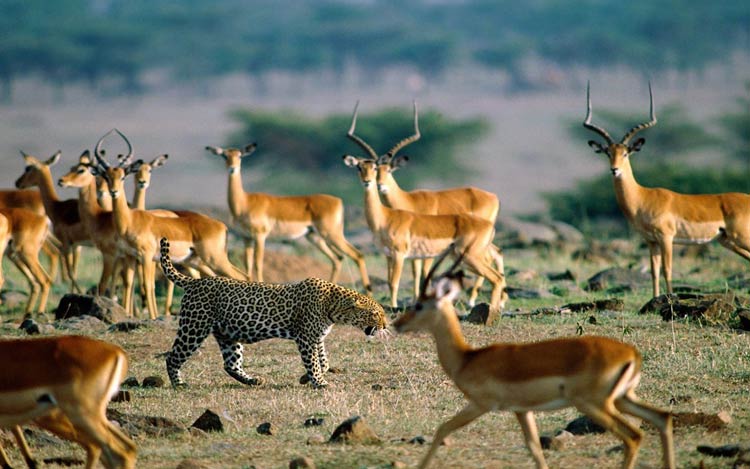
Fauna of Africa in numbers
The fauna of Africa is incredibly diverse, with an estimated total of about 30,000 species of animals, making it one of the richest continents in terms of wildlife. Here are some fascinating numbers that showcase the diversity of African fauna:
- There are approximately 2,000 species of mammals in Africa, including elephants, lions, giraffes, and more.
- Over 1,000 species of reptiles can be found in Africa, including snakes, lizards, and crocodiles.
- Africa is home to around 1,000 species of amphibians, including frogs, toads, and salamanders.
- The continent is a birdwatcher’s paradise, with more than 1,400 species of birds, including storks, parrots, and vultures.
- Africa has a rich diversity of fish, with more than 2,400 species of freshwater and marine fish.
- Invertebrates are also abundant in Africa, with thousands of species of insects, spiders, and other invertebrates.
These numbers only scratch the surface of the incredible diversity of African fauna, showcasing its importance for both ecological and cultural reasons.
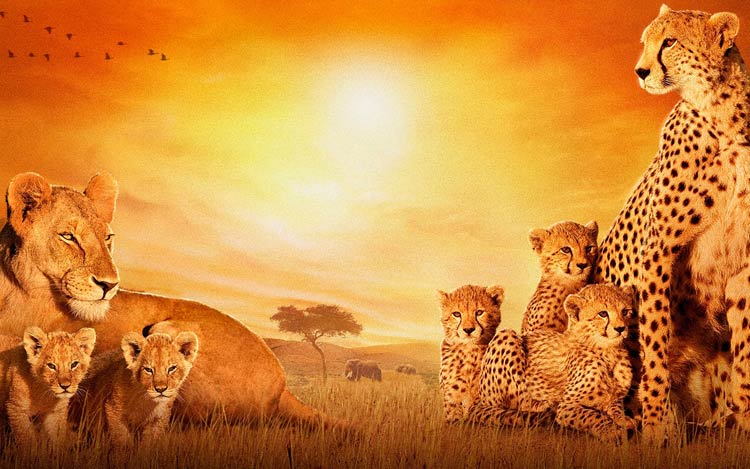
African fauna – Interesting facts
- Africa is home to the largest terrestrial mammal on earth, the African bush elephant (Loxodonta africana), which can weigh up to 10,400 kg.
- The African savanna is home to the largest migration of mammals in the world, with over 1.5 million wildebeest (Connochaetes taurinus), zebras (Equus burchelli), and gazelles (Gazella sp.) moving between the Serengeti and the Maasai Mara in search of food and water.
- The African gray parrot (Psittacus erithacus) is one of the most intelligent bird species in the world and is known for its ability to mimic human speech.
- The Nile crocodile (Crocodylus niloticus) is the largest reptile in Africa and one of the largest reptiles in the world, growing up to 6 m (20 ft) in length.
- The African rock python (Python sebae) is the largest snake in Africa and one of the largest snakes in the world, growing up to 7 m (23 ft) in length.
- The Okapi (Okapia johnstoni), also known as the forest giraffe, is native to the rainforests of the Democratic Republic of Congo and is a relative of the giraffe, despite its appearance resembling that of a zebra.
- The Secretary bird (Sagittarius serpentarius) is a unique bird of prey found in Africa that feeds on snakes and other reptiles, and is known for its long legs and distinctive crest of feathers.
- The aardvark (Orycteropus afer) is a nocturnal mammal found in Africa that feeds on ants and termites, and has a long, tubular snout and strong, burrowing claws.
- The African wild dog (Lycaon pictus) is one of the world’s most endangered mammals and is known for its unique social structure and pack-hunting behavior.
- The Saiga antelope (Saiga tatarica) is a critically endangered species found in the grasslands of central Asia and Africa, with a distinctive bulging nose used to filter dust from the air.
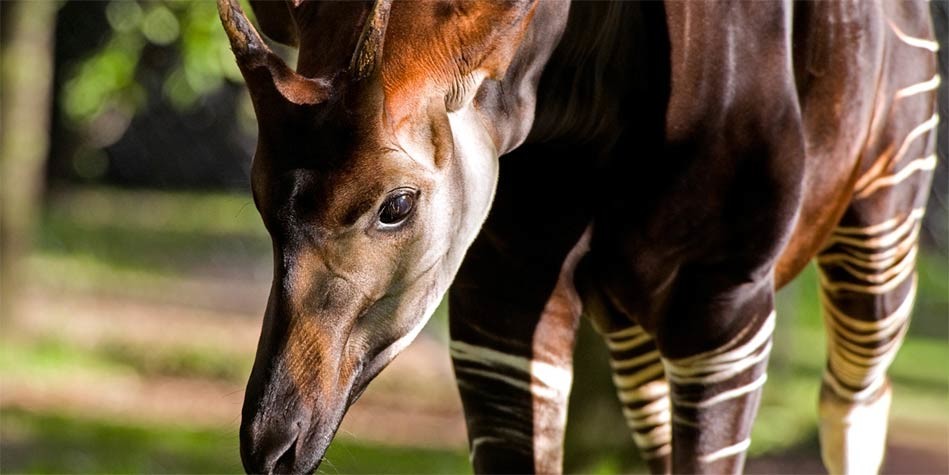
Summary
These are just a few examples of the many fascinating mammals found in Africa. Each species plays an important role in its ecosystem and contributes to the incredible biodiversity of the continent.
The fauna of Africa is incredibly diverse, with a wide range of species found across the continent. From the big five mammals – lion, elephant, buffalo, leopard, and rhinoceros – to the diverse array of reptiles, birds, amphibians, and insects, Africa is home to an incredible array of wildlife. Some of the most distinctive and well-known animals found in Africa include the majestic giraffe, the elusive cheetah, and the powerful hippopotamus. Meanwhile, the continent’s rivers and lakes are home to a rich array of fish, including the Nile perch, tilapia, and catfish. Whether on land or in the water, Africa’s animals play an important role in shaping the continent’s ecosystems and contributing to its incredible biodiversity.
Africa is renowned for its diverse and abundant wildlife, with species ranging from the iconic big five mammals – lion, elephant, buffalo, leopard, and rhinoceros – to a variety of reptiles, birds, amphibians, and insects. This incredible diversity of life can be attributed to a number of factors, including Africa’s unique geography, climate, and geological history. The continent is home to a range of different habitats, from the savannas of the Serengeti to the rainforests of the Congo Basin, each with its own unique set of species.
In addition to the big five, other well-known and distinctive animals found in Africa include the majestic giraffe, with its long neck and legs; the elusive cheetah, known for its speed and agility; and the powerful hippopotamus, which inhabits many of Africa’s rivers and lakes. Meanwhile, the continent’s waters are home to a rich array of fish, including the Nile perch, tilapia, and catfish.
Africa’s wildlife plays an important role in shaping its ecosystems and contributes to the continent’s incredible biodiversity. However, many species are facing threats from habitat loss, poaching, and other forms of human activity. Conservation efforts are underway to protect these species and ensure that Africa’s unique and diverse fauna continues to thrive for generations to come.
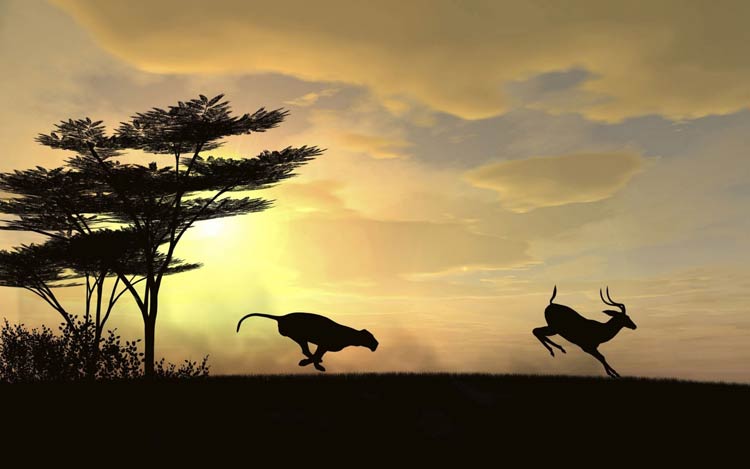
Recommended
- African lion
- Asian lion
- African elephant
- African forest elephant
- Asian elephant
- Moose
- Owls
- Parrots
- Giraffe
- Gorillas
- Zebroid
- Zebra
- Giant anteater
- Lizards
- Toucans
- Lemurs
- Gaur
- Aardvark


